I have asp.net web api application. I have the table Companies in the databse which have two fields: id and description. Recently I've updated the database and added a new column called CustomerID. After that when I am trying to call getCompanies
private readonly BackendContext _context;
public CompaniesController(BackendContext context)
{
_context = context;
}
// GET: api/Companies
[HttpGet]
public IEnumerable<Company> GetCompanies()
{
return _context.Companies;
}
I get
I think the controller tries to return the old companies model but can't achieve it because it doesnt exist now but I don't know how to fix this though the controller should return the updated model. Maybe I should somehow rebuild the app to make it use the updated version?
Additional code: Context
public class BackendContext : Microsoft.AspNetCore.Identity.EntityFrameworkCore.IdentityDbContext<IdentityUser>//DbContext
{
public BackendContext(DbContextOptions<BackendContext> options) : base(options) { }
public DbSet<Company> Companies { get; set; }
public DbSet<CompanyToProduct> CompanyToProducts { get; set; }
public DbSet<Product> Products { get; set; }
public DbSet<Customer> Customers { get; set; }
public DbSet<Vendor> Vendors { get; set; }
public DbSet<VendorToProduct> VendorToProducts { get; set; }
public DbSet<Invoice> Invoices { get; set; }
public DbSet<InvoiceItem> InvoiceItems { get; set; }
}
Model
public class Company
{
public int ID { get; set; }
public string Name { get; set; }
public string Description { get; set; }
public int CustomerID { get; set; }
public virtual Customer Customer { get; set; }
public virtual ICollection<CompanyToProduct> CompaniesToProducts { get; set; }
public virtual ICollection<Invoice> Invoices { get; set; }
}
UPDATE I've added some values to the table and I got the response of the first company:
[{"id":1,"name":"Google","description":"free food","customerID":6,"customer":null,"companiesToProducts":null,"invoices":null}
BUT I also got the fields which is not specified in the table: customer, companiesToProducts,invoices. Invoices and companiesToProducts are tables in my database and I don't know what is customer referred to. I should also mention that these tables are connected by foreign key.



